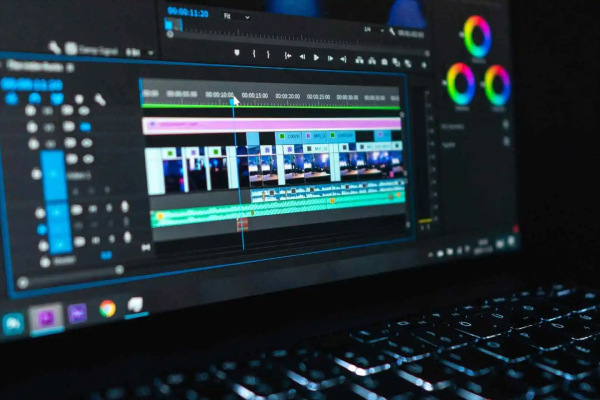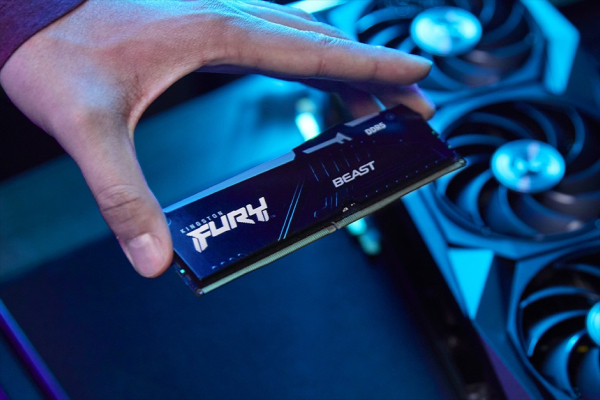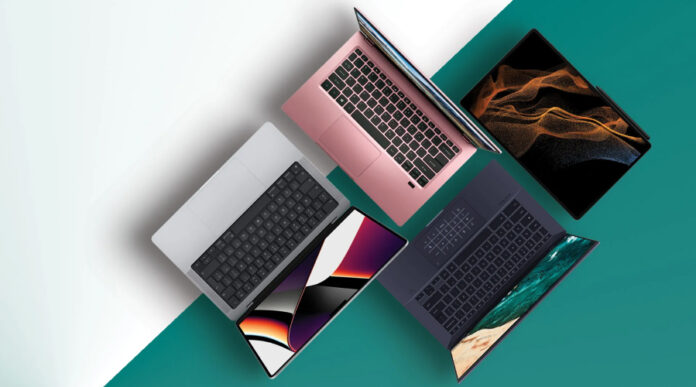Shopping for a new laptop can feel like a task, especially if you are buying it for the first time. With so many different options, specifications, and features, it is easy to get confused in the process. Aside from that, the budget also plays a crucial role when buying a laptop. Whether you’re on a budget and just need something for everyday tasks or you’re looking for a robust machine for gaming, video editing, or design work, there are choices for everyone. If you don’t know where to start, keep reading this laptop buying guide.
This guide is sure to help simplify the process. In this post, we will walk you through the most important factors to consider before making a purchase, so that you can make a smart, informed decision. So, without any further ado, let’s get started…
Table of Content
- Step-by-Step Guide To Buy A Laptop
- STEP 1: Find The Purpose – What Will You Use Your Laptop For?
- STEP 2: Consider Processor (CPU) – The Brain of Your Laptop
- STEP 3: Memory (RAM) – Multitasking Made Easy
- STEP 4: Storage – SSD vs. HDD
- STEP 5: Check Display – Never Ignore the Importance of the Screen
- STEP 6: Graphics Card (GPU) – For Gaming and Creative Work
- STEP 7: Battery Life – Stay Powered All Day
- STEP 8: Keyboard and Trackpad – Comfort is Key
- STEP 9: Ports and Connectivity – To Stay Connected at All Times
- STEP 10: Build Quality and Portability – Durability Matters
- STEP 11: Operating System – What OS Are You Comfortable With?
- STEP 12: Budget it Wisely – Be Mindful of Your Budget
Step-by-Step Guide To Buy A Laptop
Here is our step-by-step guide to help you make a mindful choice of laptop. Whether you are a student in need of something portable for your classes, or a gamer who is looking for high-performance specs, or a professional looking for a reliable machine for work, we’ve got you covered. Take a look at this guide to choose the right laptop for you…
STEP 1: Find The Purpose – What Will You Use Your Laptop For?
First things first, ponder why do you need a laptop. Yes, you will need to figure out – how you plan to use the laptop. Understanding your primary needs will make it easier to choose the right specs and features. Here are some different purposes for which people buy laptops; take a look…
- Basic Use: Basic uses include simple browsing, sending emails, and word processing. If you plan to use your laptop for only basic purposes, then you don’t need anything fancy. A budget-friendly laptop will be sufficient for you to handle basic tasks.
- Education: A Laptop has become an integral part of modern education systems. Many schools, colleges, and institutions have made it mandatory for students to have a personal laptop. They use it for studying, making presentations, and so on. If you are a student looking for a laptop, then invest in a budget-friendly piece with all the essential software and tools.
- Professional Use: Then come laptops for professional uses, such as business, remote work, and so on. If you need it for work, especially with more intensive tasks like video calls, creating spreadsheets, or running office software, then invest in a laptop with more processing power and reliability.
- Gaming: Gamers’ requirements are always different from those of all the other users. They need laptops that can handle high-end graphics and fast processing. So, if you are a gamer, you will need to invest in a laptop with a dedicated graphics card (GPU) and a high-refresh-rate screen.
- Content Creation: The World is seeing a significant rise in the number of content creators, largely due to social media platforms. Content creators use laptops for various purposes, including video editing, graphic designing, 3D modelling, and so on. If you’re into content creation, then you will need a laptop with a powerful CPU, GPU, plenty of RAM, and storage for handling large files.

Identifying your needs is a primary step to make a mindful choice of a laptop. Moreover, it will save you time and ensure you don’t spend extra money on unnecessary features.
STEP 2: Consider Processor (CPU) – The Brain of Your Laptop
A laptop without good processor is of no use, at least if you plan to use it for long time. The processor acts as the brain of your laptop. It determines how quickly and smoothly your laptop can run programs, load files, and perform tasks. Today, laptops come with advanced processors, including:
- Intel Processors: Intel’s Core i3, i5, i7, and i9 are pretty popular choices. Among these, the i3 is ideal for basic tasks, and the i7 or i9 are meant for handling more intensive work like gaming or video editing.
- AMD Processors: AMD Ryzen processors are another great option, offering solid performance at a lower price. The Ryzen 5 or Ryzen 7 are excellent choices for everyday tasks and more demanding software.
- Core Count: Core count also matters. More cores mean better multitasking. Look for at least four cores if you plan to run complex software or you need a laptop for gaming.
STEP 3: Memory (RAM) – Multitasking Made Easy
RAM is yet another important part of a laptop. It is like your laptop’s short-term memory, and it helps keep everything running smoothly when you have multiple programs open at once. Here are different RAM options to choose from:

- 4GB RAM: Ideal for light use, such as web browsing and checking emails.
- 8GB RAM: Great option for those seeking laptops for multitasking, running several apps at once, and moderate gaming.
- 16GB RAM or More: 16GB or more RAM is essential for power users, gamers, or creative professionals. This is because they use resource-heavy applications like video editing software.
You can choose to opt for the RAM size according to your requirements. Also, make sure to check if the RAM is upgradable, that way you can increase it later if your needs grow.
STEP 4: Storage – SSD vs. HDD
You will need to store your data; hence, looking for storage capacity is yet another crucial step in the process. Storage is where you will save all your files, photos, apps, and games. But not all storage is created equal. There are two main types of storage available: SSD (solid state drive) and HDD (hard disk drive).
- SSD: SSD storage is faster, more reliable, and uses less power than an HDD. It can dramatically speed up your laptop’s performance, reducing boot times and speeding up application loading.
- HDD: HDD storage, on the other hand, is more affordable but slower. If you need a lot of storage and don’t mind the slower speed, an HDD might be a good option for you.
SSD is always the better option if your budget allows, but some laptops have dual storage, with both an SSD and an HDD, for the best of both worlds.
STEP 5: Check Display – Never Ignore the Importance of the Screen
The display is where you’ll spend most of your time. Therefore, it is worth considering carefully. The better the screen, the more enjoyable your experience will be. Whether you wish to use your laptop for professional work or to watch Netflix, the display choice should be right. Here is what you need to see when choosing the display:
- Screen Size: Laptops typically range from 11 to 17 inches. For portability and ease of use, a 13- to 15-inch screen is ideal for most people. Larger screens are better for workstations or media-heavy tasks, but they’re bulkier.
- Resolution: Full HD (1920 x 1080) is the standard for most laptops today. If you do video editing, gaming, or want sharper visuals, you should consider 4K resolution.
- Panel Type: IPS panels offer better color accuracy and wider viewing angles. Content creators or people who watch a lot of media should look for better panel types.
- Refresh Rate: The Refresh rate is the frequency with which the image on a computer monitor is refreshed. Gamers should opt for a laptop with a higher refresh rate (120Hz or 144Hz) for smoother gameplay and better performance.
Also See: Best Mini Laptops Price and Specifications
STEP 6: Graphics Card (GPU) – For Gaming and Creative Work
This is specifically for gamers and creative minds. For gamers, video editors, and those who frequently run design software, the GPU is an essential component of your laptop. It determines how well your laptop handles high-quality visuals and rendering. Here is what to see:
- Integrated Graphics: They come equipped in the CPU and are considered sufficient for light gaming and everyday use.
- Dedicated GPU: If you are a gamer or a content creator, then spending on a dedicated GPU becomes essential. Dedicated GPUs, like NVIDIA GeForce GTX or RTX, are the best for gamers and content creators. A dedicated GPU gives you the power needed for smooth gaming and creative tasks.
STEP 7: Battery Life – Stay Powered All Day
Battery life is yet another essential component that you need to see when buying a laptop. This is especially for those who use laptops on the go. A longer-lasting battery means you don’t have to worry about finding an outlet during the day.
- 8 Hours: A solid baseline for most users.
- 10+ Hours: Ideal for power users or those working remotely who don’t want to be tethered to a charger.
Look for fast charging features, which can give you several hours of use after just a short charging session.
STEP 8: Keyboard and Trackpad – Comfort is Key
You’ll spend a lot of time typing and using the trackpad. Therefore, it is important to make sure these components are comfortable and easy to use.
- Keyboard: Look for a keyboard that feels responsive and has good key travel, and spacing is what you need for smooth operation. A backlit keyboard is a plus, especially if you tend to type more in low light.
- Trackpad: A smooth, responsive trackpad is important for navigation. Make sure it’s large enough and offers good accuracy.
STEP 9: Ports and Connectivity – To Stay Connected at All Times
Ports are again essential. Make sure your laptop has the right ports and connectivity features for your needs. You will need ports for connecting external devices like a mouse, monitor, or hard drive, or to stay connected wirelessly. Here is what to see in a laptop:
- USB Ports: At least two USB 3.0 or USB-C ports for fast data transfer.
- HDMI: If you need to connect your laptop to an external monitor or TV, an HDMI port is essential.
- Wi-Fi: Look for Wi-Fi 5 (802.11ac) or, better yet, Wi-Fi 6 for faster speeds and better efficiency.
- Bluetooth: For wireless devices like headphones or speakers.
STEP 10: Build Quality and Portability – Durability Matters
If you’re constantly on the go, portability and durability are key. Laptops made with premium materials, like aluminum, tend to last longer and look sleeker.
- Material: Metal builds (like aluminum or magnesium alloy) feel more premium and are more durable than plastic.
- Weight: Look for a lightweight laptop, ideally under 4 pounds, so it’s easy to carry around.
STEP 11: Operating System – What OS Are You Comfortable With?
Operating system (OS) is another crucial aspect. Choosing the right operating system is crucial as it will impact your overall experience. The three main options are as follows:
- Windows: The most common OS. They are available with a wide range of software and hardware compatibility.
- macOS: macOS is designed only for Apple devices. macOS is known for its smooth, user-friendly interface and is popular among creative professionals.
- Chrome OS: Found on Chromebooks, Chrome OS is lightweight and designed for users who mostly work online.
STEP 12: Budget it Wisely – Be Mindful of Your Budget
Last but not least, is the budget you have for your laptop. Cost is definitely an important aspect. Laptops are available at a range of price points; consider buying the one that is in your budget. Different options are as follows:
- Apple Laptop: Apple laptops are feature-rich devices, they range between INR 80,000 to 1,50,000
- HP Laptops: HP is yet another popular laptop brand. HP laptops are ideal for professionals. An HP laptop may cost you somewhere around INR 40,000 to INR 1,00,000 or more, depending on the features you choose.
- DELL Laptop: DELL is again a popular laptop brand. DELL laptops offer much-needed durability. Professionals often prefer Dell laptops. You can get one between INR 35,000 and INR 1,10,000 or more.
- Acer Laptop: Acer is yet another popular laptop brand. It may cost you somewhere around INR 35,000 to INR 1,00,000 for a good laptop with advanced features.
Aside from these, there are several laptop brands that offer high-quality laptops at budget-friendly prices. You can choose to buy the one based on the components discussed above.
The Bottom Line: Choosing the Right Laptop for You
So, there you have it: the laptop buying guide to enhance your experience and spend wisely. Remember that the right laptop for you depends on what you plan to do with it and how much you’re comfortable spending. Whether you are a student looking for something lightweight for notes and streaming, a professional needing a reliable machine for work, or a gamer chasing high-performance specs, there’s a laptop for everyone.
It’s essential to keep a few things in mind when making your choice: processing power for speed, storage space for your files and programs, display quality for clear visuals, and battery life to keep you going throughout the day. Also, pay attention to the keyboard and trackpad as these will be your main tools for navigation.
Additionally, consider how portable the laptop is, along with its build quality, especially if you plan on carrying it around a lot. With a little research and a clear understanding of your specific requirements, you’ll be able to find the laptop that fits both your pocket and your needs perfectly. Happy Buying… 😊 😊

